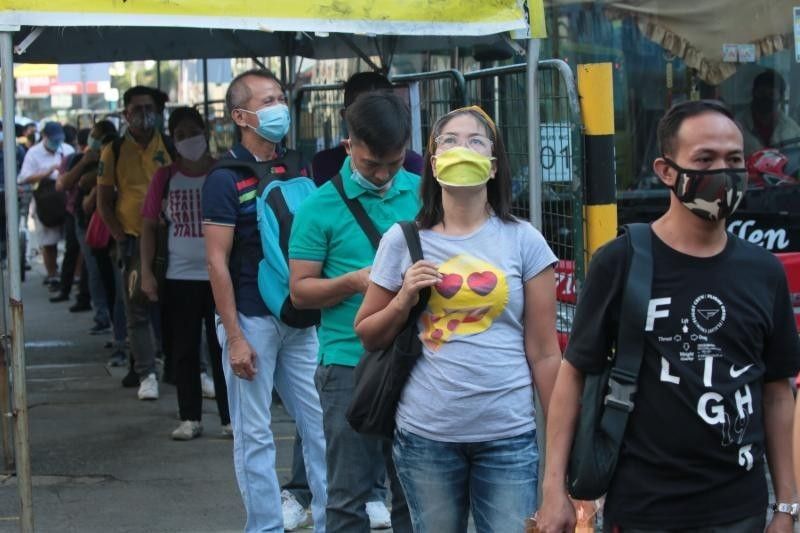Unemployment rate eases to pandemic-low of 5-7%

MANILA, Philippines — The number of jobless Filipinos in April slipped to the lowest level since the pandemic hit the country as the economy continues to reopen, but analysts said going back to the pre-COVID level still seems to be quite far off. The Philippines Statistics Authority (PSA) reported yesterday that there were 2.76 million jobless Filipinos in April, a decline from the 2.87 million a month ago.
The unemployment rate, in turn, slightly eased to 5.7 percent, the lowest level since lockdowns started two years ago.
Similarly, the underemployment rate – pertaining to the proportion of workers who were looking for more hours of work – went down to 14 percent or 6.4 million Filipinos from 15.8 percent or 7.42 million in March.
The average weekly hours of work of an employed person slightly declined to 40.1 hours from 40.6 hours.
However, fewer Filipinos went out and looked for work in April, with the labor force participation rate decreasing to 63.4 percent of the total working age population from 65.4 percent in March.
This translates to around 48.39 million economically active Filipinos whether employed or looking for work, a decrease from the 49.85 million in March.
In a briefing yesterday, national statistician Dennis Mapa said among the reasons given by Filipinos as to why they did not join the labor force in April were “household duties” and “schooling.”
Socioeconomic Planning Secretary Karl Chua, on the other hand, said fewer Filipinos participated in the labor force due to supply chain disruptions brought about by the Russia-Ukraine conflict and seasonal factors in agriculture, among others.
“Higher oil prices and seasonal factors have impacted workers in the transport and agriculture sectors, respectively, and hindered some from going to work,” Chua said in a statement.
Despite easing to a pandemic-low, Leonardo Lanzona, labor economist and professor at the Ateneo de Manila University, argued that the changes did not seem to be significant overall, considering that it was election month.
“Usually, unemployment increases when people in the agricultural sector move to the urban areas. With money flowing from the elections, people are not inclined to look for work, and economic activity may have been moderate,” Lanzona said in an exchange.
“It is likely that once the effects of the elections dissipate and economic activity picks up across the regions, the labor force participation rate and the associated unemployment will increase again,” he said.
Research and advocacy group IBON Foundation, for its part, noted that the April labor force data showed a 1.3 million decline in net employment creation despite the easing in the unemployment rate.
“This appears to be mostly among the ranks of the self-employed and informal family farms and businesses and this highlights their extreme irregularity and volatility as sources of income,” said IBON executive director Sonny Africa.
He added the decline in the labor force participation rate may be a sign of discouraged workers dropping out of the labor force because there is actually no work to be found.
“It is also very likely that the reported drop in underemployment is simply because even those wanting additional hours of work and earnings have stopped looking because they know how poor prospects are,” Africa said.
The latest unemployment print at 5.7 percent is just a few percentage points away from the pre-pandemic rate of 5.3 percent in January 2020 or when nationwide lockdowns have yet to be implemented.
Asked whether the pre-pandemic unemployment rate could be reached within the year, Lanzona said the country should be closer to the pre-pandemic period if jobs are being created along with increases in the labor force participation rate.
“The latest data in April does not show much job creation,” Lanzona said.
Africa concurred, noting that “the government will have a very hard time bringing joblessness down in any meaningful sense without a real fiscal stimulus.”
He argued that the unemployment rate may continue to be brought down even to pre-pandemic levels but this will likely be hollow.
Now, the government maintained that targeted subsidies and the full resumption of face-to-face schooling will help bring back employment in the hardest-hit sectors.
Chua said P6.1 billion is being rolled out for the transport and agriculture sectors. Of this, P5 billion is set aside for public utility vehicle drivers and operators while the remaining P1 billion will be distributed as fuel discounts to farmers and fisherfolk.
Further, the outgoing NEDA chief reiterated the need to resume face-to-face classes to fully reap the benefit of Alert Level 1 in most parts of the country.
“Without the full resumption of face-to-face classes, businesses that cater to students remain closed or operate at reduced capacity. In addition, one-fourth of parents cannot go to work as they need to support and manage their children’s online schooling, thus limiting the income generation of some households,” Chua said.
“We must now focus on accelerating our growth by strengthening our domestic economy and investing in the education and development of our children. This will help secure better employment opportunities for future generations,” he said.
Meanwhile, the PSA data showed that the biggest driver of the employment gain during the month was administrative and support service activities at 349,000.
Other industries that showed the largest increase in job creation include accommodation and food service activities at 343,000, transportation and storage at 289,000, agriculture and forestry at 251,000, and construction at 249,000.
On the other hand, contributing to the drop in employment were fishing and aquaculture, education, and wholesale and retail trade.
Workers are grouped into the three sectors, namely, agriculture, industry, and the services sector. Those in the services sector comprised most of the employed persons, accounting for 58 percent share during the month.
Services sector was followed by agriculture with 23.6 percent share while the industry sector accounted for the smallest share of 18.4 percent.
- Latest
- Trending




























